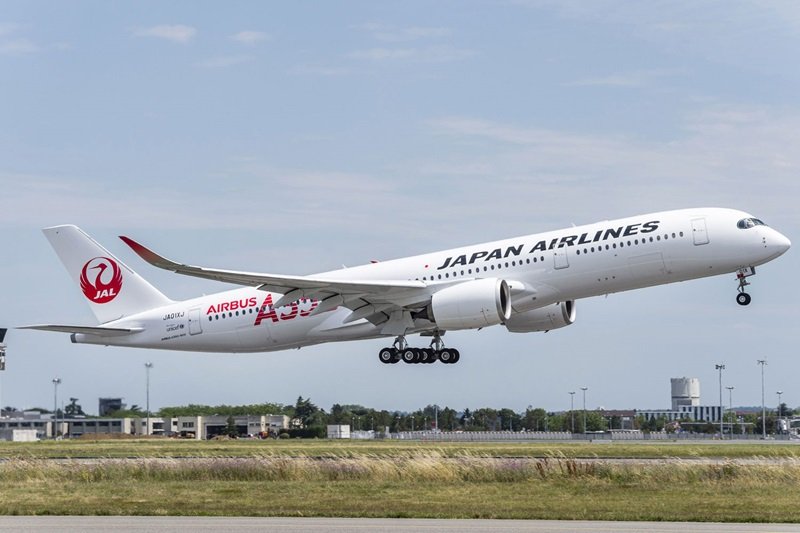Unveiling the Japan Airlines Haneda Airport Crash: A Tale of Chaos, Miracle, and Aviation Safety.
In the wake of the plane crash on January 2 at Tokyo's Haneda Airport involving a Japan Airlines (JAL) Airbus A350 and a Coast Guard Bombardier DHC-8, a detailed investigation has brought to light the lack of safety measures that could have averted the catastrophe. Despite the severity of the collision, all 379 passengers and crew on the JAL plane survived, marking it as a miraculous escape. This article delves into the specifics of the crash, the successful evacuation of the airliner, potential causes, and how aviation safety is shaped by data gleaned from such accidents.
Summary of the Crash:
The collision occurred on Haneda's Runway C, where the inbound JAL Airbus A350 collided with an outbound Coast Guard Bombardier DHC-8. Tragically, five of the six individuals on the Coast Guard plane lost their lives, while all occupants on the JAL flight survived. The immediate cause of the crash appears to be miscommunication between the Coast Guard pilot and the air traffic control tower.
A Japan Airlines Airbus A350-900. The A350 is part of the new generation of giant twin jets using composite materials in its construction. As well as the gain in the weight-to-strength ratio, these materials burn slowly which buys valuable time during an aircraft evacuation.
Specifics of How the Crash Occurred:
The misinterpretation of the "number 1" command, designating the Coast Guard aircraft as the first in standby, led to the pilot entering the runway without clearance. The lack of visual monitoring and the 40-second wait before the collision highlight critical flaws in the communication and monitoring systems.
Successful Evacuation of the Airliner:
Despite flames engulfing the aircraft and smoke filling the cabin, the evacuation of all 379 passengers and crew from the JAL plane was hailed as a miracle. The well-trained cabin crew played a crucial role in maintaining order and ensuring a smooth evacuation. Passengers adhered to instructions, leaving personal items behind, showcasing cultural qualities that prioritize order and cooperation.
Examining Possible Causes of the Accident:
The investigation revealed several factors contributing to the accident, including bad phraseology, inoperable airport lights, and the absence of visual monitoring on the runway. The revelation about out-of-service stop bar lights since April raises concerns about preventive measures for runway incursions. Cost-cutting measures, such as the decision not to hire additional staff for runway monitoring, have come under scrutiny.
A Japan Coast Guard Bombardier Dash 8-300 similar to that which was lost in the 02 January 2024 accident at Haneda. Ironically, the Dash 8 was mobilized to assist with relief for earthquake victims. One tragedy leading to another.
Aviation Safety and Data from Accidents:
Accidents like the Haneda crash serve as critical learning experiences for the aviation industry. Post-accident investigations lead to substantial improvements in aircraft design, flight procedures, and safety regulations. Examples include FAA rules combating pilot fatigue, automation of key aircraft functions, and advancements in materials like carbon composites. The industry continuously refines safety measures based on the data obtained from accidents, ensuring a proactive approach to preventing future occurrences.
Conclusion:
The Japan Airlines Haneda Airport crash stands as a stark reminder of the intricate balance required in aviation safety. The survival of all occupants on the JAL plane, despite the severity of the collision, showcases the effectiveness of well-trained crews and cooperative passengers. However, the investigation into the incident reveals systemic issues that demand immediate attention to prevent similar accidents in the future.
In the relentless pursuit of safer skies, the aviation industry must address the root causes, whether they be in communication protocols, infrastructure maintenance, or staffing levels. The industry's commitment to learning from accidents, as evidenced by the continuous refinement of safety measures, underscores its dedication to passenger well-being. As technology advances and data-driven insights shape the future of aviation, the hope is that each incident brings us closer to a world where air travel is not only a marvel of engineering but also a paragon of safety.
Further reading: WSWS, Kyodo News, National Seniors, NY Post.
What are your thoughts? Comment below.


